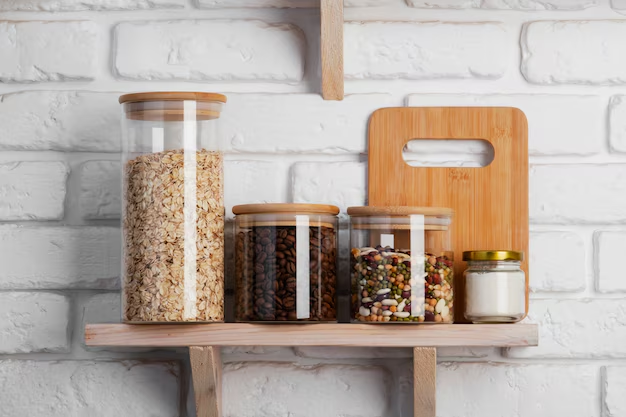The Ultimate Guide to Storing Fresh Herbs in Your Refrigerator
Imagine plucking a vibrant sprig of basil from your fridge days after you bought it, with the same aroma and freshness as if it had just been picked from the garden. Keeping herbs fresh can be challenging, yet with the right techniques, your herbs can thrive in your refrigerator. Discover how the right storage can make your herbs last longer and elevate your cooking to new aromatic heights.
🌱 Why Proper Herb Storage Matters
Fresh herbs are a culinary secret weapon, adding unique flavors and aromas that can transform dishes. However, improper storage can quickly turn them limp and lifeless. Proper storage not only extends the shelf life of your herbs but also preserves their flavor and nutritional benefits. Whether you're a seasoned chef or a home cook, understanding how to care for and store herbs is invaluable.
Types of Herbs
Before diving into storage techniques, it's vital to differentiate between the types of herbs:
- Tender herbs: Basil, cilantro, parsley, mint, etc. These herbs are delicate and need more moisture.
- Hardy herbs: Rosemary, thyme, sage, oregano, etc. These sturdy herbs have woody stems and prefer less humidity.
Each category has its ideal storage conditions, so it's crucial to tailor your approach based on the herb type.
🥗 Key Techniques for Storing Herbs in Your Refrigerator
Method 1: The Jar Technique for Tender Herbs
Tender herbs are best stored as you would fresh-cut flowers: in water.
Steps:
- Trim the ends of the herb stems.
- Fill a jar with about an inch of water.
- Place herbs stem-side down in the jar.
- Loosely cover the herbs with a plastic bag.
- Store in the refrigerator.
Benefits:
- Keeps herbs hydrated and vibrant.
- Prolongs the freshness for about a week or more.
Tip: Avoid submerging the leaves in water to prevent decay.
Method 2: The Damp Paper Towel Approach
If you're low on space or don't have a jar, this method works well for both tender and hardy herbs.
Steps:
- Moisten a paper towel (not soaking wet).
- Wrap the herbs gently in the towel.
- Place the wrapped herbs inside a plastic bag or airtight container.
- Seal container or bag and store in the fridge.
Benefits:
- Provides balanced moisture—preventing wilting or drying out.
- Works well for a wide variety of herbs.
Method 3: The Open-Air Strategy for Hardy Herbs
Hardy herbs need less moisture, making this method ideal for their storage.
Steps:
- Trim ends if necessary.
- Place herbs in an open container or a loose plastic bag.
- Store in the refrigerator away from overly cold or damp areas.
Benefits:
- Maintains herb integrity without excess moisture.
- Easily accessible when needed.
🧂 Additional Tips for Keeping Herbs Fresh
While proper storage techniques are crucial, several additional practices can help maintain the quality of your herbs:
Regular Monitoring
- Check your herbs frequently: Remove any wilted or discolored leaves to prevent spoilage from spreading.
- Adjust moisture levels: If a towel feels too dry or the water level has dropped, refresh as needed.
Timing
- Purchase wisely: Buy herbs in smaller amounts rather than stocking up, matching consumption rates.
- Use immediately: Integrate herbs into your cooking soon after purchase, maximizing their flavor and utility.
Refrigerator Environment
- Temperature: Ensure your fridge is set to about 34 to 40°F for ideal herb-preservation conditions.
- Placement: Store herbs on the middle shelf or in the crisper drawer to maintain stable temperatures.
🌿 Consumer Guide: How to Maximize Herb Freshness
Here's a quick summary to help you keep those herbs fresh and flavorful:
- Basil & Parsley: 🌿 Store in jars with water and keep covered.
- Cilantro: Place in a jar with water or wrap in a damp towel.
- Rosemary & Thyme: Opt for open storage to prevent moisture buildup.
- Use a breathable bag: Avoid sealing containers completely, allowing air circulation.
📝 Practical Summary: Herb Storage Tips
Here's a handy checklist to help you remember these essential tips:
- ✅ Identify herb type: Tailor your method by knowing if they're tender or hardy.
- 💧 Monitor moisture: Regularly check and adjust as needed to maintain freshness.
- 🕒 Plan use: Buy and store in amounts you’ll use within a week for best results.
- 🍃 Keep tidy: Remove spoiled parts to extend the life of the rest.
Conclusion
Mastering the art of herb storage is like harnessing the power of nature in your kitchen, allowing you to maintain the utmost flavor, aroma, and nutrients. By understanding the specific needs of different types of herbs and the techniques to meet those needs, you can keep your culinary game strong without the disappointment of spoiled greenery. With these tips, you're equipped to ensure your herbs remain fresh, flavorful, and ready to enhance any meal you create.
